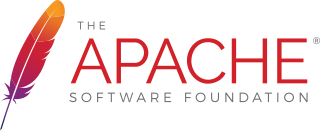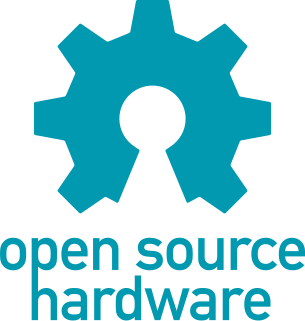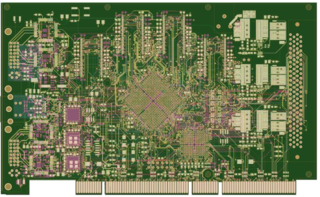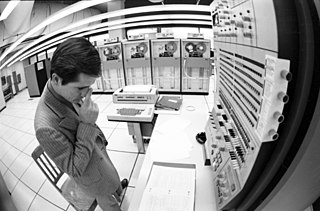
Bruce Perens is an American computer programmer and advocate in the free software movement. He created The Open Source Definition and published the first formal announcement and manifesto of open source. He co-founded the Open Source Initiative (OSI) with Eric S. Raymond. Today, he is a partner at OSS Capital.

The Apache License is a permissive free software license written by the Apache Software Foundation (ASF). It allows users to use the software for any purpose, to distribute it, to modify it, and to distribute modified versions of the software under the terms of the license, without concern for royalties. The ASF and its projects release their software products under the Apache License. The license is also used by many non-ASF projects.
The Open Software License (OSL) is a software license created by Lawrence Rosen. The Open Source Initiative (OSI) has certified it as an open-source license, but the Debian project judged version 1.1 to be incompatible with the DFSG. The OSL is a copyleft license, with a termination clause triggered by filing a lawsuit alleging patent infringement.
An application program is a computer program designed to carry out a specific task other than one relating to the operation of the computer itself, typically to be used by end users. Word processors, media players, and accounting software are examples. The collective noun refers to all applications collectively. The other principal classifications of software are system software, relating to the operation of the computer, and utility software ("utilities").

TrueCrypt is a discontinued source-available freeware utility used for on-the-fly encryption (OTFE). It can create a virtual encrypted disk within a file, or encrypt a partition or the whole storage device.

Open-source hardware (OSH) consists of physical artifacts of technology designed and offered by the open-design movement. Both free and open-source software (FOSS) and open-source hardware are created by this open-source culture movement and apply a like concept to a variety of components. It is sometimes, thus, referred to as FOSH. The term usually means that information about the hardware is easily discerned so that others can make it – coupling it closely to the maker movement. Hardware design, in addition to the software that drives the hardware, are all released under free/libre terms. The original sharer gains feedback and potentially improvements on the design from the FOSH community. There is now significant evidence that such sharing can drive a high return on investment for the scientific community.

A free and open-source graphics device driver is a software stack which controls computer-graphics hardware and supports graphics-rendering application programming interfaces (APIs) and is released under a free and open-source software license. Graphics device drivers are written for specific hardware to work within a specific operating system kernel and to support a range of APIs used by applications to access the graphics hardware. They may also control output to the display if the display driver is part of the graphics hardware. Most free and open-source graphics device drivers are developed by the Mesa project. The driver is made up of a compiler, a rendering API, and software which manages access to the graphics hardware.
TAPR is an international amateur radio organization. It was founded in Tucson, Arizona, in 1981 by a group of amateurs interested in developing a terminal node controller (TNC) for amateur use. Thus, the group was named Tucson Amateur Packet Radio, Inc. After developing one of the first widely available TNCs, TAPR rapidly became a national and then international group. It now identifies itself simply by the acronym TAPR rather than the spelled-out name. TAPR no longer has any direct connection with Tucson, Arizona.
ITK is a cross-platform, open-source application development framework widely used for the development of image segmentation and image registration programs. Segmentation is the process of identifying and classifying data found in a digitally sampled representation. Typically the sampled representation is an image acquired from such medical instrumentation as CT or MRI scanners. Registration is the task of aligning or developing correspondences between data. For example, in the medical environment, a CT scan may be aligned with an MRI scan in order to combine the information contained in both.

The Open Graphics Project (OGP) was founded with the goal to design an open-source hardware / open architecture and standard for graphics cards, primarily targeting free software / open-source operating systems. The project created a reprogrammable development and prototyping board and had aimed to eventually produce a full-featured and competitive end-user graphics card.

In the 1950s and 1960s, computer operating software and compilers were delivered as a part of hardware purchases without separate fees. At the time, source code, the human-readable form of software, was generally distributed with the software providing the ability to fix bugs or add new functions. Universities were early adopters of computing technology. Many of the modifications developed by universities were openly shared, in keeping with the academic principles of sharing knowledge, and organizations sprung up to facilitate sharing. As large-scale operating systems matured, fewer organizations allowed modifications to the operating software, and eventually such operating systems were closed to modification. However, utilities and other added-function applications are still shared and new organizations have been formed to promote the sharing of software.
The Microsoft Open Specification Promise is a promise by Microsoft, published in September 2006, to not assert its patents, in certain conditions, against implementations of a certain list of specifications.

VideoCore is a low-power mobile multimedia processor originally developed by Alphamosaic Ltd and now owned by Broadcom. Its two-dimensional DSP architecture makes it flexible and efficient enough to decode a number of multimedia codecs in software while maintaining low power usage. The semiconductor intellectual property core has been found so far only on Broadcom SoCs.

A free-software license is a notice that grants the recipient of a piece of software extensive rights to modify and redistribute that software. These actions are usually prohibited by copyright law, but the rights-holder of a piece of software can remove these restrictions by accompanying the software with a software license which grants the recipient these rights. Software using such a license is free software as conferred by the copyright holder. Free-software licenses are applied to software in source code and also binary object-code form, as the copyright law recognizes both forms.
The CERN Open Hardware Licence is a license used in open-source hardware projects. It was created by CERN, which published version 1.0 in March 2011. Version 1.1 was published in July 2011. Version 1.2 was published in September 2013. Version 2.0, which utilizes a simplified language and covers also integrated circuit designs, was published in March 2020.

The Open Hardware and Design Alliance (OHANDA) aims at encouraging the sharing of open hardware and designs. The core of the project is a free online service where manufacturers of Open hardware and designs can register their products with a common label. This label maps the four freedoms of Free Software to physical devices and their documentation. It is similar to a non-registered trademark for hardware and can be compared to other certificates such as U.S. Federal Communications Commission (FCC) or CE mark. OHANDA thus has the role of a self-organized registration authority.
The OpenPOWER Foundation is a collaboration around Power ISA-based products initiated by IBM and announced as the "OpenPOWER Consortium" on August 6, 2013. IBM is opening up technology surrounding their Power Architecture offerings, such as processor specifications, firmware and software with a liberal license, and will be using a collaborative development model with their partners.
The Open Source Hardware Association (OSHWA) is a non-profit organization that advocates for open-source hardware. It aims to act as a hub of open source hardware activity of all types while actively cooperating with other initiatives such as the TAPR Open Hardware License, open-source development groups at CERN, and the Open Source Initiative (OSI). It has also been active in promoting diversity and inclusive terminology within the open source hardware movement.
Open source is source code that is made freely available for possible modification and redistribution. Products include permission to use the source code, design documents, or content of the product. The open-source model is a decentralized software development model that encourages open collaboration. A main principle of open-source software development is peer production, with products such as source code, blueprints, and documentation freely available to the public. The open-source movement in software began as a response to the limitations of proprietary code. The model is used for projects such as in open-source appropriate technology, and open-source drug discovery.









